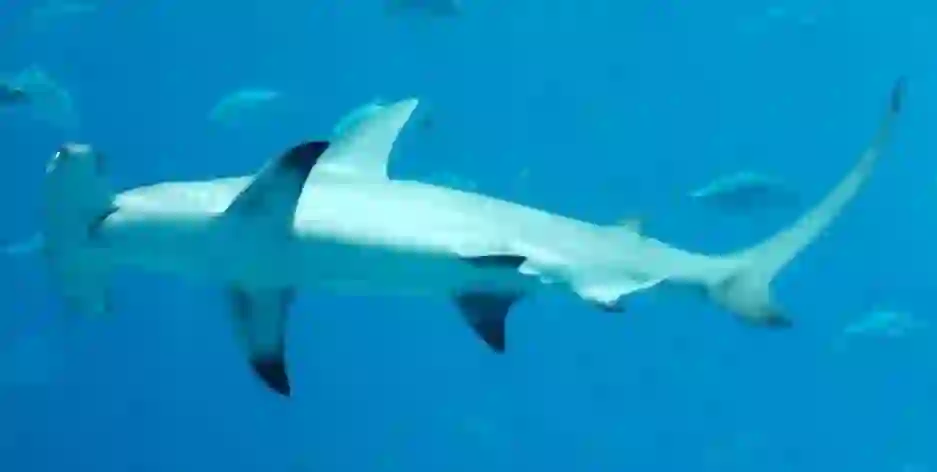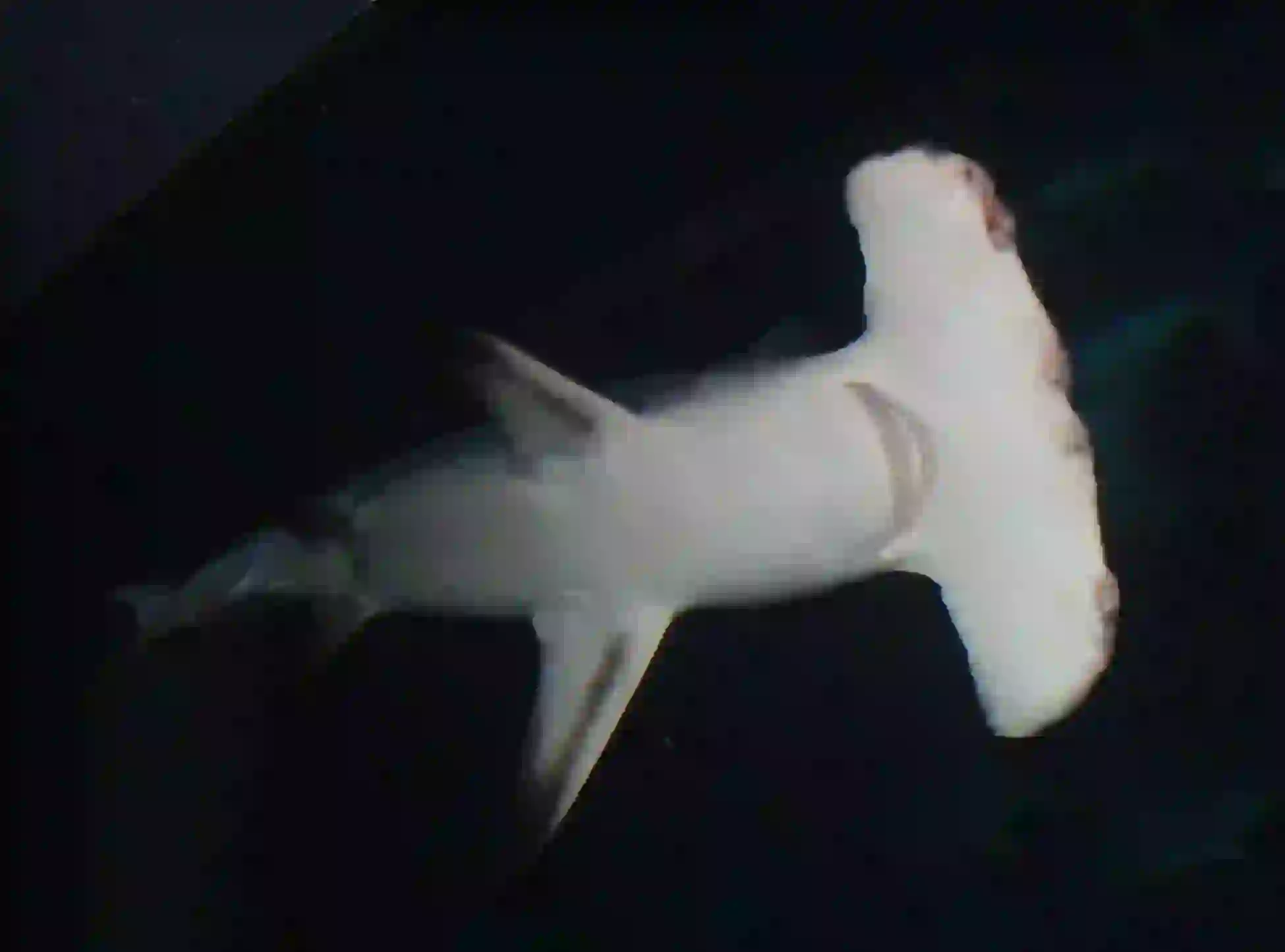
Great Hammerhead Shark
Great Hammerhead Shark
Great Hammerhead Shark
The great hammerhead shark, a master hunter of the sea. The largest of all hammerhead species, they are known for their distinctive hammer-shaped head and massive dorsal fin. What secrets lie within this hammer-like head? Let's dive into the ecology of the great hammerhead shark and the challenges they face.
Great Hammerhead Shark Basic Infomation

| Property | Value |
|---|---|
| Scientific Name | Sphyrna mokarran |
| Taxonomic Status | ACCEPTED |
| Rank | SPECIES |
| Vernacular Names | Great Hammerhead Shark |
| Kingdom | Animalia |
| Phylum | Chordata |
| Class | Chondrichthyes |
| Order | Carcharhiniformes |
| Family | Sphyrnidae |
| Genus | Sphyrna |
| Habitats | Tropical and subtropical waters worldwide |
| Descriptions | The great hammerhead shark is a massive shark that can reach up to 20 feet (6 meters) in length. Its head is wider and flatter than that of other hammerhead shark species. |
| Conservation Status | Endangered |

Size
Great hammerhead sharks can grow up to 20 feet (6 meters) long and weigh up to 1,280 pounds (580 kilograms)! Females tend to be larger than males.

Lifespan
They are estimated to live for about 20 to 30 years.

Distribution
They are widely distributed in tropical and subtropical waters worldwide. They have been sighted in a variety of locations, from coastal areas to the open ocean, but they prefer to inhabit areas around continental shelves and coral reefs.
Great Hammerhead Shark Q&A

What kind of shark is the great hammerhead shark?
The great hammerhead shark is the largest of all hammerhead shark species. Their most distinctive feature is their hammer-shaped head, called a 'cephalofoil.'
The cephalofoil extends laterally on both sides of the head, with eyes and nostrils located at the tips. They are aptly named 'Great Hammerhead Sharks' in English – truly 'great sharks' with hammer-like heads!

What is the purpose of the great hammerhead shark's hammer-shaped head?
The great hammerhead shark's cephalofoil is a remarkable adaptation that helps them survive in the ocean.
・Wide field of vision: With eyes positioned on the cephalofoil, they have a wider field of vision than other sharks, allowing them to locate prey and avoid predators more effectively.
・Enhanced sense of smell: The cephalofoil also functions as an olfactory organ, and by swinging it from side to side, they can detect the scent of prey from a wider area.
・Electroreceptors: The cephalofoil has a high concentration of electroreceptors called 'ampullae of Lorenzini,' which can detect the weak electrical fields generated by other organisms. They use these receptors to find prey hidden in the sand and detect the presence of predators.
・Lift: The cephalofoil acts like an airplane wing, generating lift, allowing them to move through the water with less energy.
・Maneuverability: The cephalofoil also acts as a rudder, enabling them to make quick turns in the water.
It's a truly multifunctional hammer!

What do great hammerhead sharks eat?
Great hammerhead sharks are carnivores, primarily feeding on stingrays, sharks, squid, octopus, and crustaceans. They use the 'ampullae of Lorenzini' in their cephalofoil to locate stingrays hidden in the sand.
Once they find a stingray, they pin it to the seabed using their cephalofoil and use their sharp teeth to bite and kill it. They also eat other types of fish and sea turtles.

[Quiz!] Do great hammerhead sharks lay eggs or give birth to live young?
Great hammerhead sharks reproduce through a method called 'ovoviviparity.' This means that the eggs hatch inside the mother's body, and the pups are born live.
Females give birth to 6 to 55 pups at a time. The pups are independent from birth and take about 10 years to reach adult size.

[Quiz!] Are great hammerhead sharks dangerous to humans?
Great hammerhead sharks can attack humans. They are a dangerous species because of their large size and powerful jaws.
However, they do not actively hunt humans. In most cases, attacks occur when humans enter their territory or provoke them. If you encounter a great hammerhead shark, do not approach or touch it, and calmly leave the area.

[Quiz!] Are great hammerhead sharks endangered?
Unfortunately, the great hammerhead shark is listed as Endangered on the IUCN (International Union for Conservation of Nature) Red List. Their population is declining due to overfishing and habitat destruction.
The demand for shark fins, a delicacy in some cultures, is a major problem. To protect great hammerhead sharks, it is crucial to regulate overfishing, conserve their habitat, and raise awareness. Choosing not to consume shark fin soup is one way we can contribute to their protection.

Would you like to become a part of the 'Animalbook.jp'?
Turn your knowledge into Q&A and share it with the world. ※Publication will be activated after purchase. Let's share information together!
Great Hammerhead Shark Type of List

Efforts to Protect Great Hammerhead Sharks
- Strengthening fishing regulations
- Banning shark finning
- Habitat conservation
- Awareness campaigns
Information
Congratulations! You are the first commenter!

Create Your Favorite List!
Great Hammerhead Shark
Save the animals you love! Build your own list to quickly revisit your favorites later.

Would you like to leave a comment?
※Please note: This is for the purchase of rights to post comments within the article.
Find Your Favorites!
Our shop offers a unique and attractive selection of goods themed around various animals.
Great Hammerhead Shark References
Great Hammerhead Shark Introduction of media used

Albert kok, CC BY-SA 4.0, via Wikimedia Commons

Josh Hallett from Winter Haven, FL, USA, CC BY 2.0, via Wikimedia Commons

NOAA NMFS Mississippi Laboratory, CC BY 3.0, via Wikimedia Commons

Jim Capaldi from Springfield, USA, CC BY 2.0, via Wikimedia Commons

Help Enrich Our Animalbook.jp with Your Media!
We are constantly looking to expand and enrich our Animalbook.jp with amazing photos and videos of animals. If you have any media that you'd like to share, please contribute and help us showcase the beauty and diversity of the animal kingdom. Your submissions will be credited and featured in our encyclopedia, reaching a wide audience of animal lovers.


















